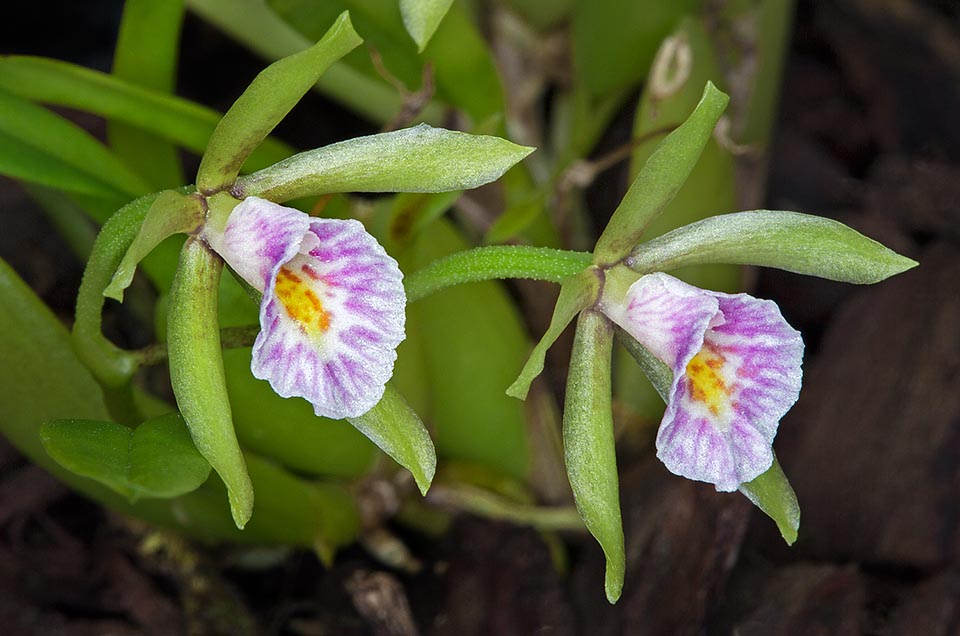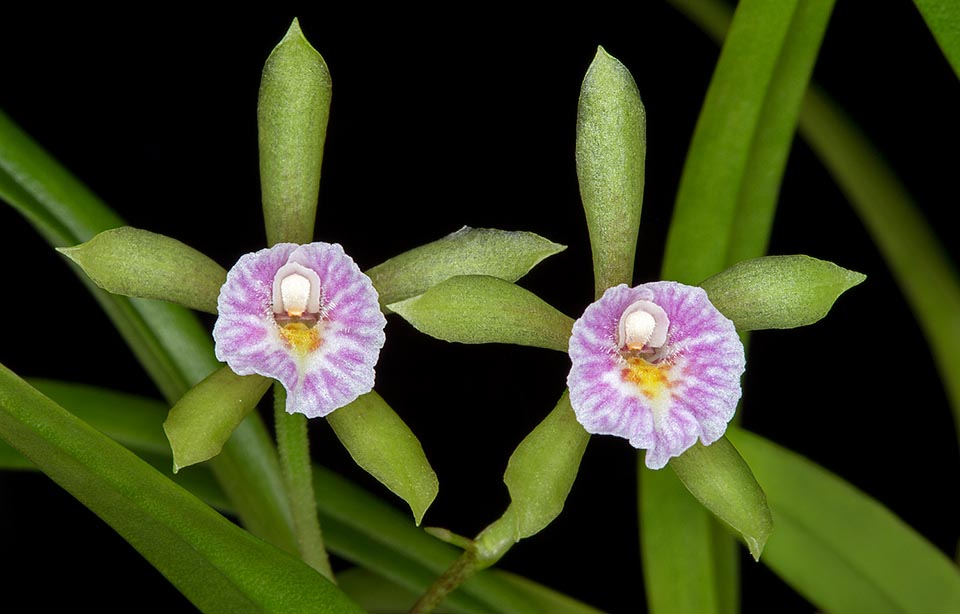Family : Orchidaceae

Text © Pietro Puccio

English translation by Mario Beltramini
The species is native to Colombia, Costa Rica, Ecuador and Panama where it grows on the trees of the misty forests at low and medium altitudes.
The name comes from the abbreviated one, C. Schweinf., of the American botanist and collector Charles Schweinfurth (1890-1970) who has dedicated his professional life to the study of the orchids; the name of the species is the combination of the Greek adjective “δασύς” (dasys) = hairy, hirsute and of the substantive “ἀνήρ, ἀνδρός” (anér, andrós) = male, with reference to the anther.
The Cischweinfia dasyandra (Rchb.f.) Dressler & N.H.Williams (1970) is an epiphytic species with ellipsoidal pseudobulbs laterally compressed, 2-4,5 cm long and 0,4-0,8 cm broad, subtended by distichous foliate sheaths and provided at the apex of one single linear-lanceolate leaf with acuminate apex, 7-18 cm long and 0,4-1 cm broad.

The Cischweinfia dasyandra is an epiphytic miniature orchid of the misty forests of Central America easy to cultivate, also at home © Giuseppe Mazza
It reproduces by seed, in vitro, and by division, with each section provided of at least 3-4 pseudobulbs.
Floriferous miniature orchid, of easy cultivation and fast growth, requires high luminosity, even filtred sunlight, medium-high temperatures, 18-30 °C, with lowest winter values not under the 15 °C, high humidity, 75-90%, and air in continuous movement. Regular and abundant waterings during the growth of the pseudobulbs, slightly more spaced during the vegetative rest, but without ever allowing the substratum to dry up too much, utilizing rain water, demineralized or by reverse osmosis.

Compressed 2-4,5 cm ellipsoidal pseudobulbs, with a 7-18 cm single leaf, and inflorescences with 2-5 flowers of 2-2,5 cm of diameter © Giuseppe Mazza
The species is reported in the appendix II of the CITES (species whose trade is internationally ruled).
Synonyms: Trichopilia dasyandra Rchb.f. (1883); Leucohyle dasyandra (Rchb.f.) Schltr. (1920); Cischweinfia glicensteinii Christenson (2003).
→ For general notions about ORCHIDACEAE please click here.
